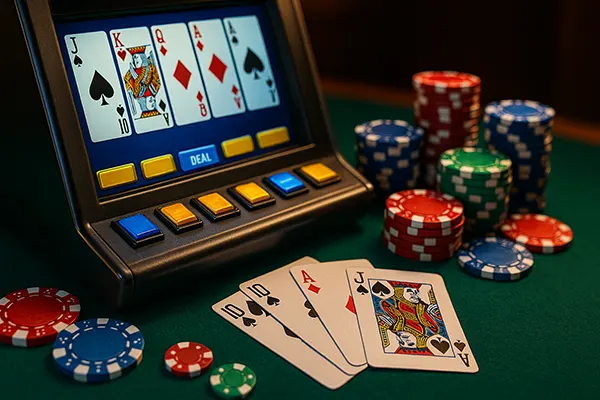How to Read Opponents at the Poker Table

Understanding how to read your opponents at the poker table is an essential skill for any player aiming to improve their game. This article delves into practical strategies, key behaviours to observe, and how to leverage psychological insights for better decisions at the table. Developing this skill will not only boost your confidence but also help you adapt to different playstyles and table dynamics effectively.
Why Reading Opponents Matters
Poker is as much a psychological game as it is about cards. Observing and interpreting the actions of your opponents can provide invaluable information about their strategies and potential hands. This skill not only improves your decision-making but also increases your chances of winning pots through effective counterstrategies.
The ability to read opponents is particularly useful in competitive games or tournaments where stakes are high. It allows you to anticipate moves, adjust your gameplay, and even control the pace of the game. By understanding opponents’ tendencies, you can create opportunities to bluff more effectively or fold when necessary to minimise losses.
Moreover, being observant at the table sets experienced players apart from amateurs. Consistently practising this skill will sharpen your instincts and improve your overall success rate in poker games. Every movement, hesitation, or unusual action can potentially signal a hidden intention, and recognising these details can be the difference between winning and losing.
Developing the Skill of Observation
The first step to reading opponents is to pay attention to their behaviour consistently. Watch for patterns in betting, facial expressions, and body language. Players often have “tells”—unconscious behaviours that reveal the strength or weakness of their hand. For instance, sudden changes in posture or fidgeting can indicate nervousness, often associated with bluffing.
Observation doesn’t stop at the physical tells. Pay attention to how players interact with others at the table. Do they appear confident and assertive, or are they more reserved? These behaviours often translate to their betting habits. Additionally, tracking the rhythm of their decisions—whether they act quickly or take their time—can provide clues about their thought process and hand strength.
Being observant also means recognising your own biases. Avoid making assumptions based on stereotypes or limited interactions. Focus instead on identifying consistent behaviours over multiple hands to build an accurate profile of your opponents. Patience is key, as rushing to conclusions can lead to costly mistakes.
Key Behaviours to Observe
Once you’ve developed a habit of observation, focus on specific behaviours that provide clues about your opponents’ hands. These include betting patterns, reaction times, and table talk. Each behaviour can reveal crucial insights into a player’s intentions.
Betting patterns are often the most straightforward indicator of a player’s strategy. For instance, an opponent who regularly checks on the flop but bets aggressively on the turn may be setting traps for unsuspecting players. Similarly, players who frequently make minimum bets may be cautious and waiting for a strong hand. Identifying these tendencies early can help you adapt your own strategy accordingly.
Reaction times are another critical factor to observe. A quick call or raise might suggest confidence, whereas hesitation could indicate uncertainty or a bluff. Some players intentionally vary their reaction times to confuse opponents, so be mindful of these tactics and cross-reference them with other behaviours for accuracy.
Finally, listen carefully to table talk. Casual remarks or exaggerated reactions can sometimes reveal more than intended. For example, a player expressing frustration may be attempting to disguise a strong hand, while silence could signal focus on a critical decision. Understanding the psychology behind these actions allows you to interpret their true intentions.
Interpreting Betting Patterns
Betting behaviour is one of the most telling aspects of a player’s strategy. Frequent aggressive bets may signal confidence, whereas sudden hesitations could imply doubt. Learning to identify consistent betting styles—such as tight, loose, aggressive, or passive—can give you a strategic edge.
An essential aspect of interpreting betting patterns is distinguishing between deliberate strategies and accidental behaviours. Experienced players may intentionally vary their bets to confuse observant opponents, creating a false sense of predictability. Understanding the nuances of these actions requires practice and keen analytical skills.
Additionally, consider how the position of a player at the table influences their betting. A late position often gives players more information to act upon, leading to calculated risks or bluffs. Observing how opponents behave in different positions provides additional insights into their decision-making process.

Using Psychology to Your Advantage
Understanding the psychological dynamics at the table can turn the game in your favour. Recognising emotional states, such as tilt or overconfidence, enables you to adapt your playstyle to exploit these weaknesses. Poker is a game of mental resilience, and understanding your own mindset alongside that of your opponents is crucial for long-term success.
One psychological aspect to consider is how players react to winning or losing streaks. Some opponents may become overly aggressive after a big win, assuming their luck will continue. Others may tighten their gameplay after significant losses, fearing further mistakes. Adapting your strategy to exploit these tendencies can provide a significant advantage.
Maintaining a calm and composed demeanour yourself can also work to your benefit. Opponents who cannot read your intentions are less likely to make confident decisions, giving you an upper hand in high-pressure situations. The ability to project confidence while concealing your actual strategy is a hallmark of expert players.
Creating a Psychological Profile
Build a mental profile for each opponent based on observed behaviours and interactions. Over time, you’ll notice recurring patterns that make it easier to predict their moves. Use this information to tailor your strategies, such as bluffing against cautious players or tightening your range against aggressive opponents.
A psychological profile includes both emotional and logical aspects of a player’s behaviour. Track how opponents handle different scenarios, such as bad beats or sudden changes in table dynamics. These observations can reveal vulnerabilities or strengths that you can exploit during critical moments.
Lastly, remember that psychology is a two-way street. While you’re observing others, they may also be analysing you. Balancing your focus between offensive and defensive psychological strategies ensures that you remain unpredictable and difficult to exploit, even against experienced opponents.



